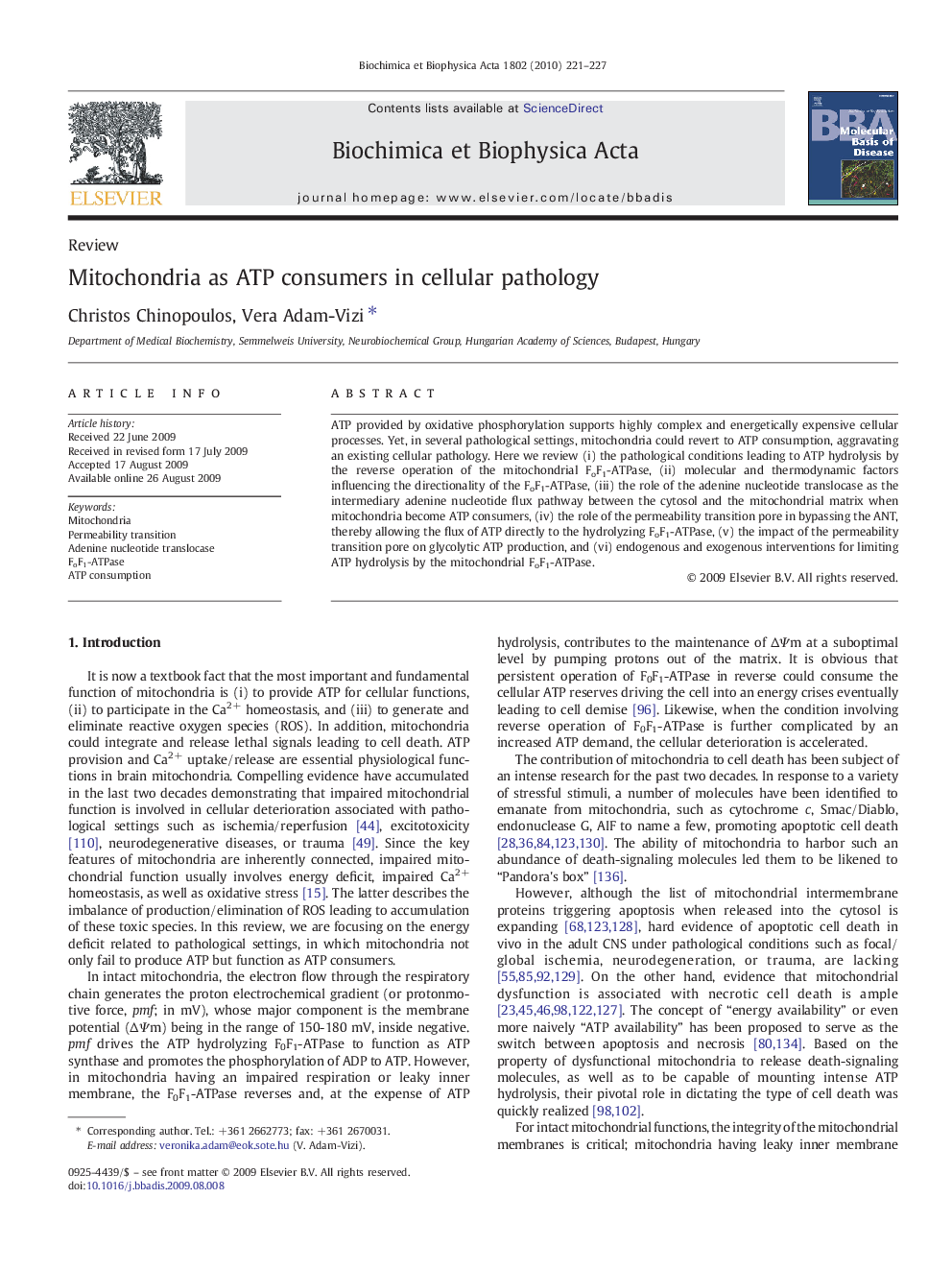| Article ID | Journal | Published Year | Pages | File Type |
|---|---|---|---|---|
| 1905434 | Biochimica et Biophysica Acta (BBA) - Molecular Basis of Disease | 2010 | 7 Pages |
ATP provided by oxidative phosphorylation supports highly complex and energetically expensive cellular processes. Yet, in several pathological settings, mitochondria could revert to ATP consumption, aggravating an existing cellular pathology. Here we review (i) the pathological conditions leading to ATP hydrolysis by the reverse operation of the mitochondrial FoF1-ATPase, (ii) molecular and thermodynamic factors influencing the directionality of the FoF1-ATPase, (iii) the role of the adenine nucleotide translocase as the intermediary adenine nucleotide flux pathway between the cytosol and the mitochondrial matrix when mitochondria become ATP consumers, (iv) the role of the permeability transition pore in bypassing the ANT, thereby allowing the flux of ATP directly to the hydrolyzing FoF1-ATPase, (v) the impact of the permeability transition pore on glycolytic ATP production, and (vi) endogenous and exogenous interventions for limiting ATP hydrolysis by the mitochondrial FoF1-ATPase.
